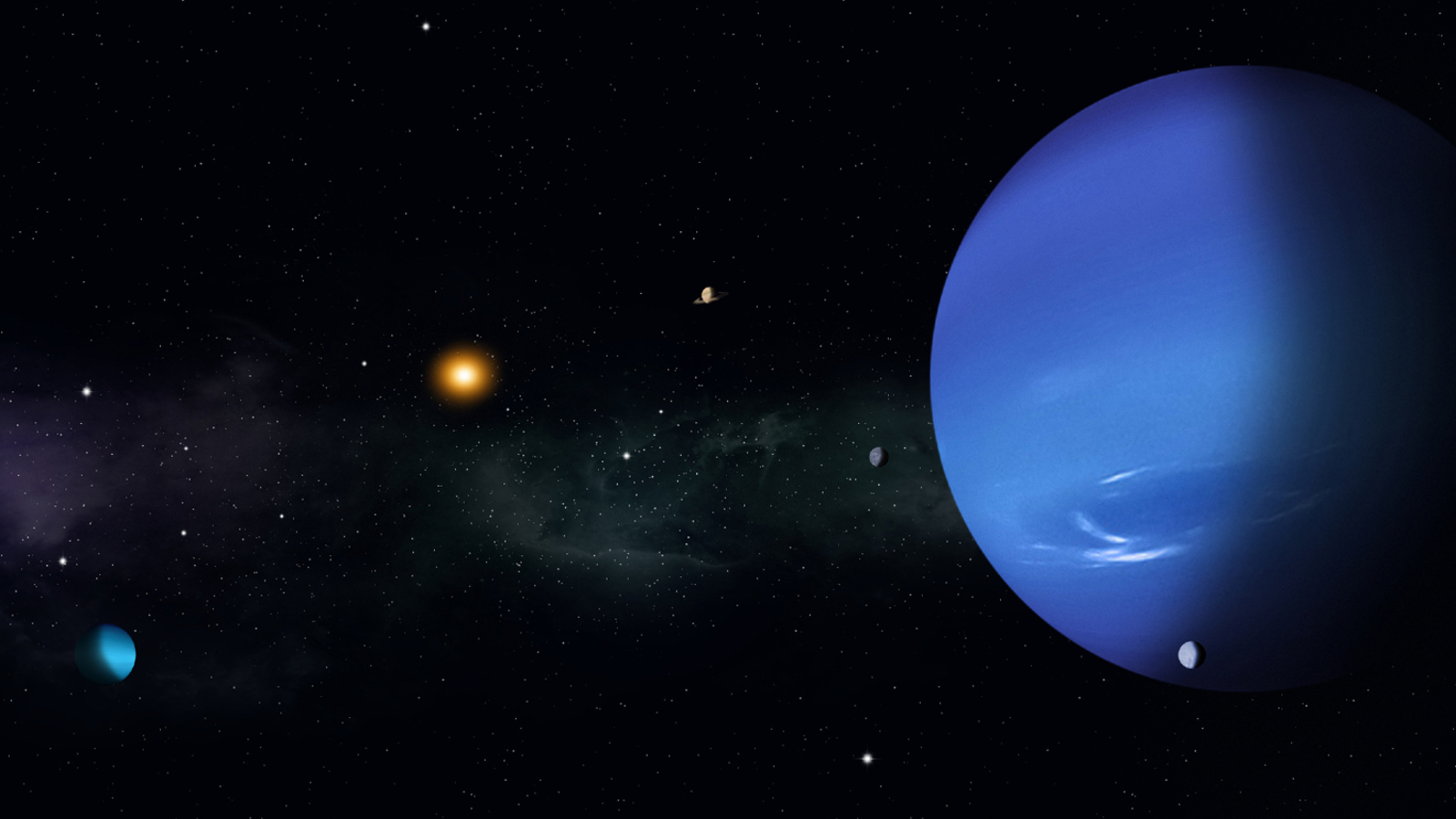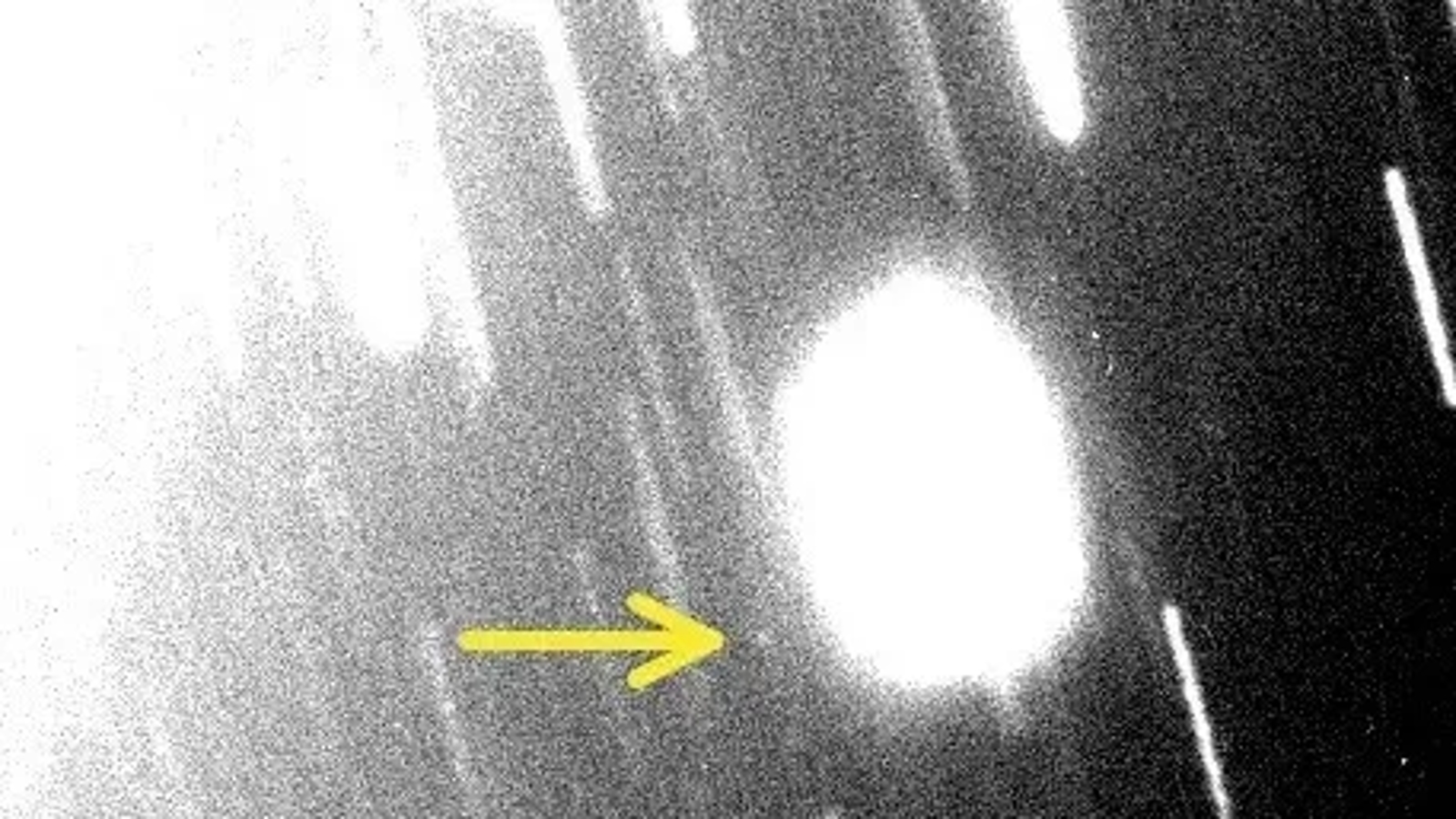3 new moons discovered around Uranus and Neptune will be named after Shakespeare characters and Greek goddesses
The International Astronomical Union has confirmed the existence of three currently unnamed moons — one around Uranus and two orbiting Neptune.

The solar system just got three new official residents — a trio of tiny moons, one of which orbits Uranus and two more that circle Neptune.
The three moons were all spotted several years ago but were recently confirmed by the International Astronomical Union's (IAU) Minor Planet Center — the organization responsible for naming new solar system objects such as moons, asteroids and comets. The new trio, which have been given numerical designations, will be given formal, literature and mythology-inspired names in the coming years.
Uranus' new moon, S/2023 U1, is only around 5 miles (8 kilometers) across, making it one of the smallest known moons around any of the eight planets in the solar system, alongside Mars' minute companion Deimos. The diminutive moon, which takes around 680 days to orbit around Uranus, brings the planet's total moon count to 28. Like the other Uranian moons, S/2023 U1 will eventually be named after a character from the plays of William Shakespeare, joining the likes of previously discovered moons such as Titania, Oberon and Puck.
Neptune's new satellites, S/2002 N5 and S/2021 N1, are around 14.3 miles (23 km) and 8.7 miles (14 km) wide respectively. S/2021 N1 takes around 9 years to orbit Neptune, while S/2002 N5 takes almost 27 years to orbit the furthest planet from the sun, which now has 16 known moons. Like other Neptunian moons, the newly recognized bodies will be named after the Nereids — the daughters of the sea god Nereus from Greek mythology.
The new moons were each spotted using ground-based telescopes, which is no mean feat considering their diminutive size and distance from our planet.
"The three newly discovered moons are the faintest ever found around these two ice giant planets using ground-based telescopes," Scott Sheppard, an astronomer at the Carnegie Institution for Science in Washington D.C. who was involved in all three discoveries, said in a statement. "It took special image processing to reveal such faint objects."
Related: 10 out-of-this-world solar system discoveries made in 2023
Sign up for the Live Science daily newsletter now
Get the world’s most fascinating discoveries delivered straight to your inbox.

The new moons are so small and far away that their movements are normally too small to be noticeable in most ground-based images of Uranus or Neptune, especially compared to distant stars and galaxies in the background. To counteract this problem, the astronomers took long exposure images and stacked them together to create images where background objects, such as stars and galaxies, became blurred. This stacking made objects with relative motions to each planet stand out much more clearly.
This technique allowed the astronomers to "bring the moons out from behind the background noise in the images," Sheppard said.
The new trio aren't the only moons recently discovered around solar system planets. In February 2023, the IAU confirmed 12 new moons around Jupiter, bringing its total to 92 — the highest total of any planet at the time. But in May last year, the IAU confirmed a whopping 62 moons around Saturn, bringing its total to 145 and wrestling the title of most satellites back from Jupiter. A majority of these new moons, which mostly spanned just a few miles across, were also discovered using Earth-based telescopes.
The recent discoveries demonstrate how new techniques, such as the image stacking, and more powerful ground-based telescopes are allowing researchers to peer even further and with greater clarity into the outer reaches of our cosmic neighborhood.

Harry is a U.K.-based senior staff writer at Live Science. He studied marine biology at the University of Exeter before training to become a journalist. He covers a wide range of topics including space exploration, planetary science, space weather, climate change, animal behavior and paleontology. His recent work on the solar maximum won "best space submission" at the 2024 Aerospace Media Awards and was shortlisted in the "top scoop" category at the NCTJ Awards for Excellence in 2023. He also writes Live Science's weekly Earth from space series.










